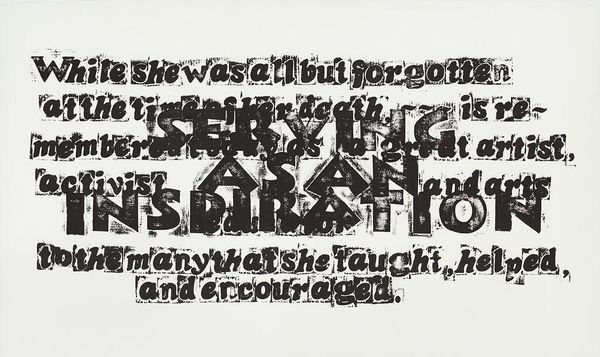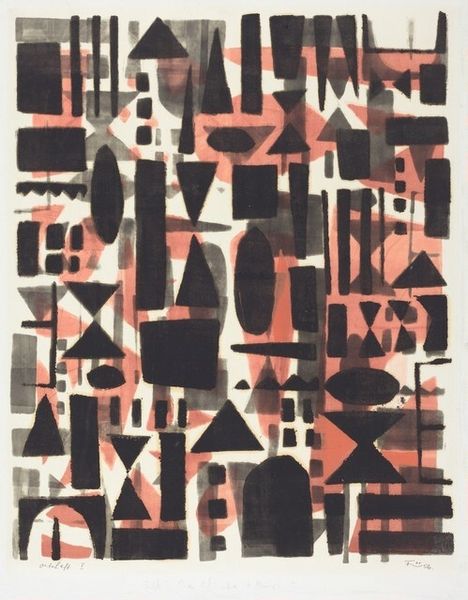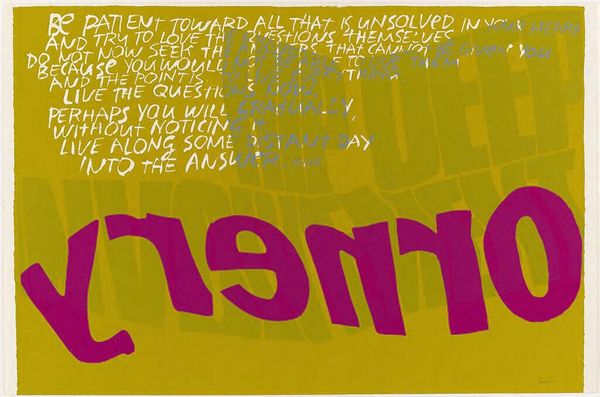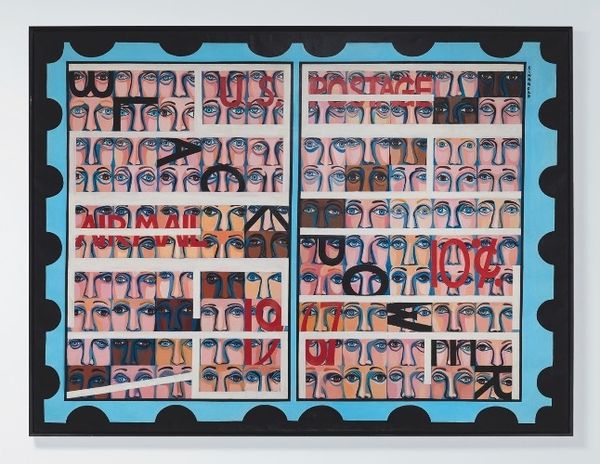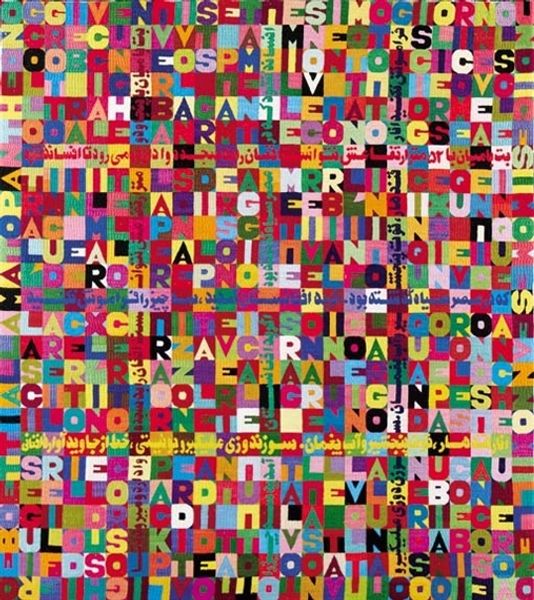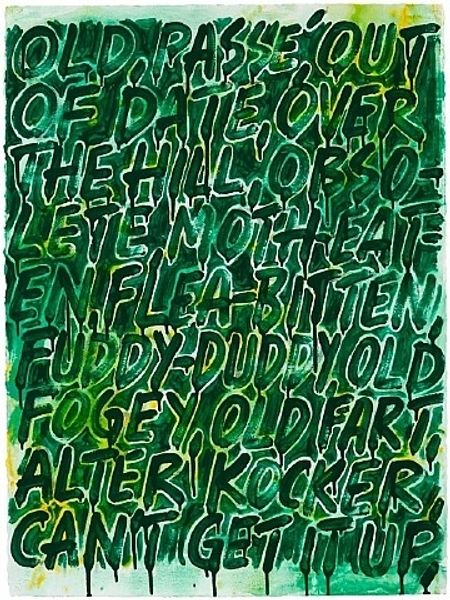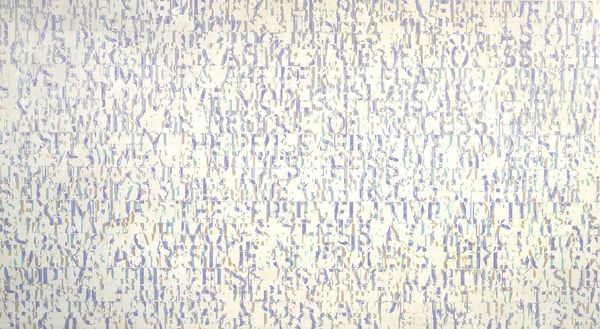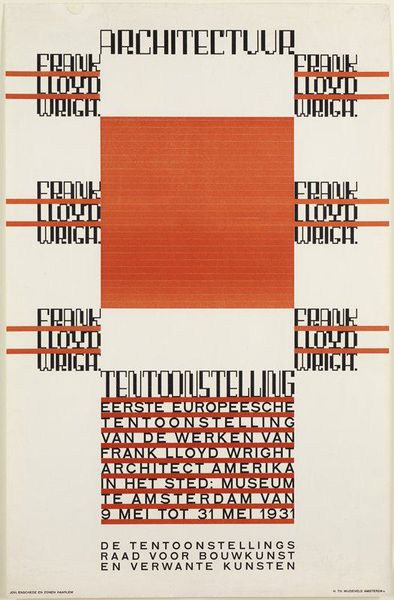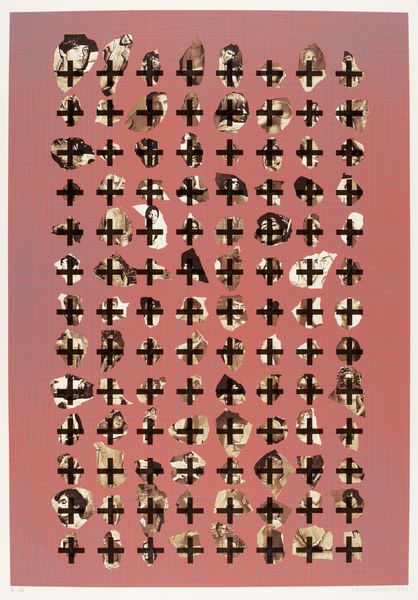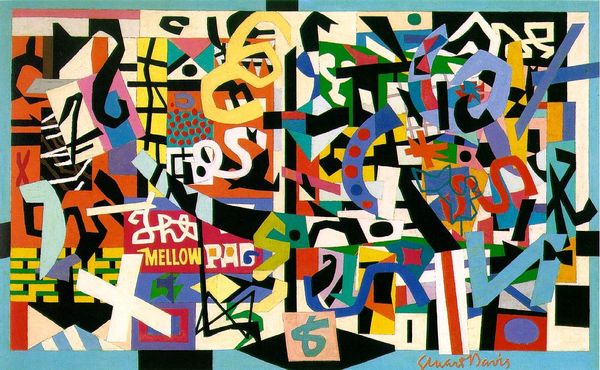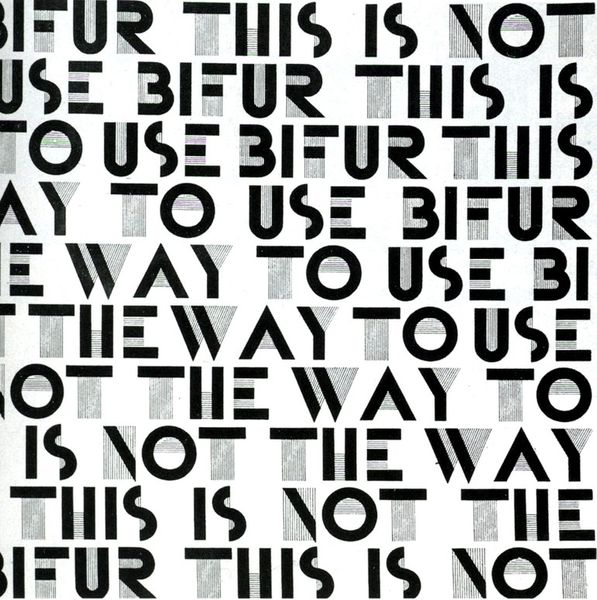
Mayfair: (Swamp rats) Ninety-seven signs for C.P., J.P., B.W., G.W. & R.W. 1995
0:00
0:00
Copyright: Robert MacPherson,Fair Use
Curator: Stepping up to this intriguing mixed-media piece, "Mayfair: (Swamp rats) Ninety-seven signs for C.P., J.P., B.W., G.W. & R.W.," created by Robert MacPherson in 1995, we're immediately confronted by a field of dense textual information. Editor: It's definitely busy! My initial impression is a sense of urban chaos, almost like a fragmented cityscape covered in graffiti, rendered in a restricted palette of browns and creams. It’s like visual noise—almost overwhelming at first. Curator: Exactly. MacPherson uses found materials and printmaking techniques to create these individual sign panels, assembled into a larger grid. The materiality speaks to a culture of signage and the vernacular. I'd argue that MacPherson deliberately evokes that street aesthetic and reminds us that everyday experiences deserve aesthetic attention. Editor: Absolutely, the textures themselves – the aging of materials, possible warping or wearing down over time and weather conditions - contribute heavily. This feels less like “high art” and more like a functional thing salvaged and presented in a gallery context. What strikes me is the manual labor, the repetition involved in the signage production. Are those serigraphs or hand-painted lettering? Either way, the repetition itself takes work, and that informs meaning here. Curator: Many panels repeat phrases relating to the coastal region; recurring words such as "bait," "rods", and location markers serve as familiar symbols for anyone within this location. The artist seems to focus less on overt narrative but on conveying specific cultural context, and geographical identifiers function almost like psychological triggers for viewers aware of what this signifies, where that represents, and, also, whom these things belong to culturally. Editor: So it creates this kind of mental mapping with those repeated terms, right? It makes one think about mass production meets handcrafted individuality—a sort of tension there as a visual object. I can also begin to appreciate the ways our consumer-driven society functions using signage that slowly shifts into abstract conceptualism, perhaps a way to reflect upon what becomes valued over others or forgotten during its lifecycle within the public and private sectors. Curator: Considering Robert MacPherson's overall fascination in reflecting Australian life via humble means, "Mayfair: (Swamp rats)" truly invites deep reflection within material culture studies. Editor: It truly makes you wonder about the hands that constructed all of this and also to recognize the relationship with place and labor inherent within artwork itself.
Comments
No comments
Be the first to comment and join the conversation on the ultimate creative platform.

